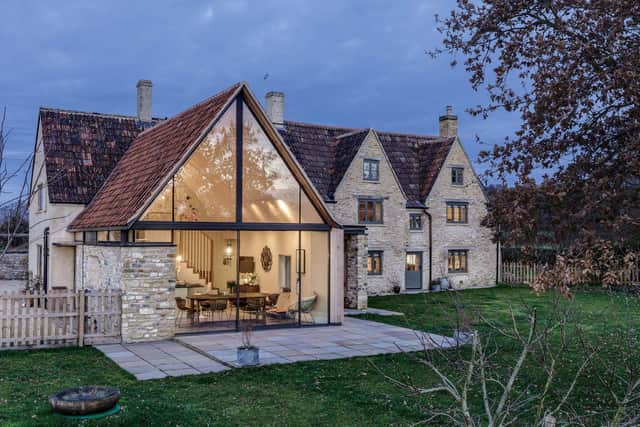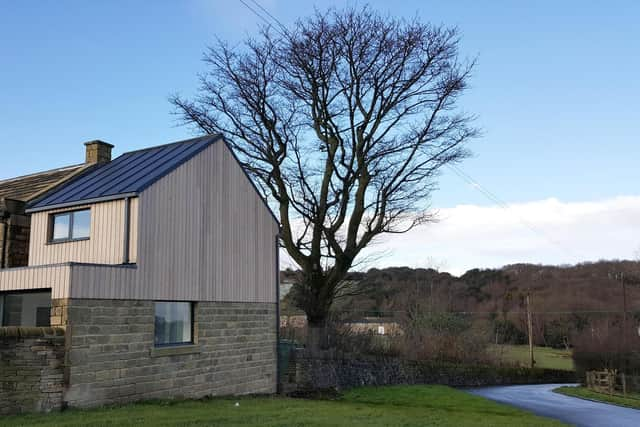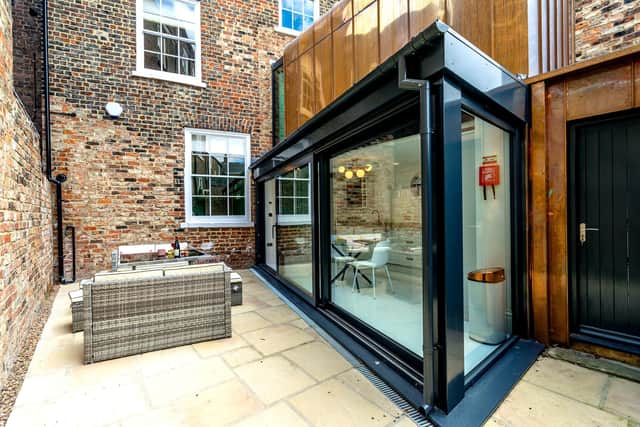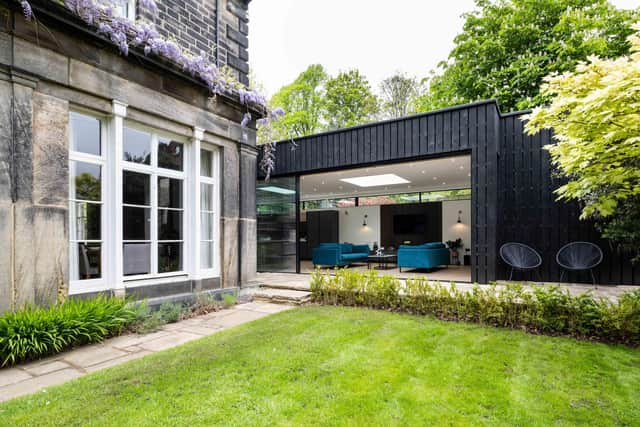How a contemporary extension to a historic home can work beautifully
The Listed Property Owners Club, the only membership organisation in the UK supporting the owners of the nation’s 500,000 Grade I, Grade II* and Grade II listed buildings, recently announced the winners of its inaugural Listed and Modern Architectural Awards.
The awards recognise innovative and inspirational traditional and modern extensions and refurbishments to listed properties where gaining planning approval can be hard to achieve.
Advertisement
Hide AdAdvertisement
Hide AdHighly contemporary additions to listed historic buildings are a relatively new concept and they have yielded some fabulous results.


The winner of the LPOC’s Residential Modern Extension of the Year was Ivy Farm in Little Sodbury, Gloucestershire, where the striking new additions were designed by Hall + Bednarczyk Architects.
The original Grade II listed home had suffered from ungainly add-ons and inappropriate maintenance methods and its new owners wanted to right these wrongs while bringing a 21st century element to the Cotswolds property.
Working with a heritage consultant and conservation officers, the aim was to use modern construction and design that was sensitive to the property’s historical character.
Advertisement
Hide AdAdvertisement
Hide AdThe result is a spectacular combination of old and new with the latter delivering an abundance of natural light and a home more suited to modern living.


Martin Anslow, Director of the Listed Property Owners Club, says: “People tend to fit buildings into discrete categories and for some the concept of a property falling into both listed and therefore ‘traditional' and also 'modern' can seem rather contradictory.
“The challenge arises when we consider the hoops we must jump through, as it can be difficult meeting a brief, appeasing the local planning authority and building something beautiful.
“It can also be a challenge to obtain listed building consent even for a small extension, let alone a full renovation or architectural transformation.”
Advertisement
Hide AdAdvertisement
Hide AdHe also points out what many architects are fully aware of, which is that when it comes to altering or extending a listed building in a contemporary manner, there can be a postcode lottery.


“Planning issues are complex, and whilst the Planning Acts are national, Local Plan policies and the interpretation of all legislation can vary and besides, beauty is in the eye of the beholder,” says Martin.
Peter Bell, LPOC Conservation Advisor, adds: "We created these awards to shift the public perception that listed status freezes a building in time. Special character evolves, enriched by each generation and we want to highlight the possibilities for listed homes.
“Ultimately, we want to make clear that listed status is not a barrier to change and need not deter owners from installing modern amenities or extensions.”
Advertisement
Hide AdAdvertisement
Hide AdArchitect Mike Fining, founder of York base Fining Associates, would agree and can prove that historic and new elements can work wonderfully together if designed well.


He and his team helped transform a run-down Grade II listed townhouse turned offices into what is now a popular holiday let overlooking Clifford’s Tower in York.
The project, which features a contemporary new extension, won two prestigious York Design Awards, including the Commercial/Community award and the People’s Choice Award.
The Finings team made the most of the property’s original features while designing a spectacular extension that serves as a visual transition between the old and the new.
Advertisement
Hide AdAdvertisement
Hide AdIt features lightweight structural glass and copper cladding. The ground floor is a kitchen, W.C. and bicycle storage, while the first floor is a luxurious bathroom.
Mike says: “A contemporary extension can be preferable in many circumstances, though not all as the surrounding context also matters. It allows the architect to push stylistic boundaries by working with a palette of new and exciting materials that can be shaped into daring geometries that are otherwise impossible with traditional techniques.
“A contemporary extension also serves to clearly demarcate the evolution of the original building. This approach allows the observer to appreciate the elements of special significance in the heritage asset while enjoying the visuospatial benefits the extension provides.”
Stuart Wighton of Leeds based Architects Wighton Architects adds: “Trying to do something traditional to tie in with the original listed building can be very expensive, though it can be done using modern building methods.
Advertisement
Hide AdAdvertisement
Hide Ad“The other issue is that a local authority conservation officer may see that as a pastiche. They may want to read the history of the building so that the original and the new are clearly defined. Whatever you do has to be sympathetic rather than at odds with the existing home.”
Dr Jonathan Duck, also a LPOC Conservation Advisor, says he focuses on the appropriateness and sensitivity of additions and alterations, including scale, visual cohesion and use of local materials.
*The Listed Property Owners Club has information on the maintenance, responsibilities and obligations on owning a listed building. It has a team of advisory conservation officers, planners, legal and tax advisors plus a directory of restoration tradesmen. www.lpoc.co.uk
Comment Guidelines
National World encourages reader discussion on our stories. User feedback, insights and back-and-forth exchanges add a rich layer of context to reporting. Please review our Community Guidelines before commenting.